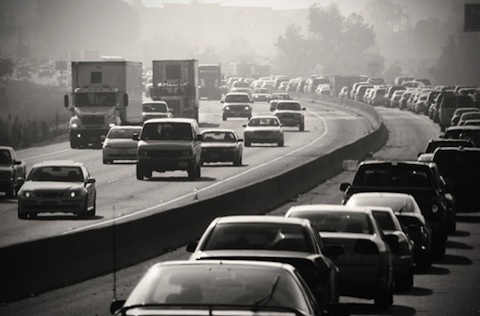
Staying on the near-death experience theme from yesterday, I went and dug up one of my all-time favorite papers on the topic: Dorothy Counts‘ 1983 study of NDEs in New Guinea. Of particular note were the visions described by the Kaliai, a people who inhabit West New Britain. When they hallucinate about the Great Beyond in the midst of physical trauma, they tend to see a place that you and I might not consider so blissful:
In Andrew’s near-death experience, Jakob’s vision, and Wallace’s dream, the land of the dead is perceived as a happy place. It is, however, not the pleasant garden reported by modern Westerners who return from death. Instead it is a land which is described as having factories and wage employment. It has an appearance which reminds me of the view approaching Los Angeles from the air. This view of the land of the dead is consistent with the belief complex known as cargo belief. Briefly, cargo belief involves the assumption that whites may not be fully human but may be, instead, spirit people or returned ancestors. Their possible non-human status derives from their appearance, for spirit people are thought to be pale or white, and from their technological superiority. Many Melanesian people, including the Kaliai, seem to assume that humans do not create their culture. Instead, language, knowledge, and technology are given to humans by the spirits and/or the ancestors. This is true for whites as well as for Melanesians; therefore, the goods that whites possess must be created by the spirits/ancestors/or God (depending on the content of the particular belief system) in the land of the dead which is rich with divinely given technology. The rituals which develop from cargo belief are intended to persuade the spirits or God to give villagers the same goods and technological knowledge that they have already given whites. The Kaliai land of the dead, is a place of factories, automobiles, highways, airplanes, European houses and buildings in great numbers, and manufactured goods.
This notion of cultural overlay on NDEs deserves further study. I’d be curious, for example, how the visions of the religious contrast with those of non-believers. And do people who’ve rejected their families still see their parents and siblings beckoning them down the long tunnel of light?
Re-reading the Counts paper actually got me thinking about my own version of heaven, and how it would certainly sharply differ from that described in, say, Dante’s Paradiso. I’d like to go to a place where all of my gluttonous impulses can be satisfied with no consequence—Founders Dirty Bastard on tap and bowls the size of volcanoes stuffed with Planter’s Cheez Balls. Of course, the fact that this is what I’d expect is probably a good indication that I deserve no such reward.


tsg // Nov 9, 2010 at 12:44 pm
If heaven hath no Planter’s Cheez Balls, I see no point in leading a righteous life.